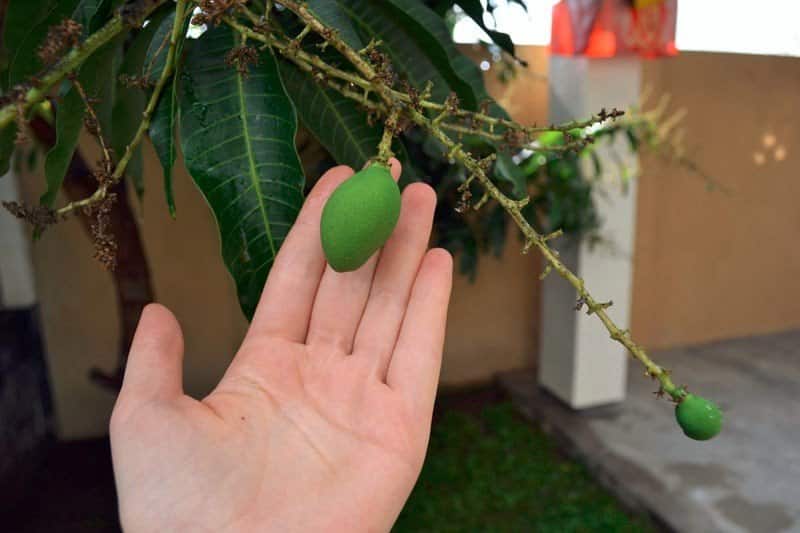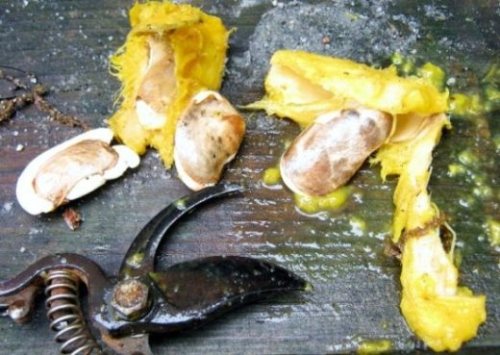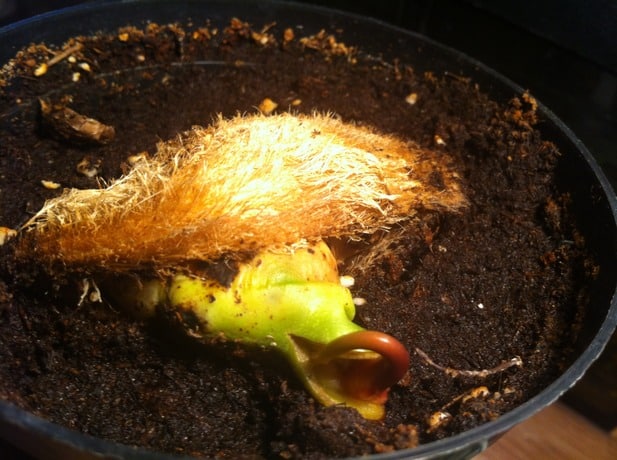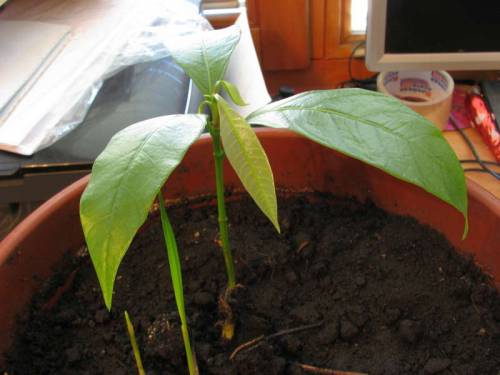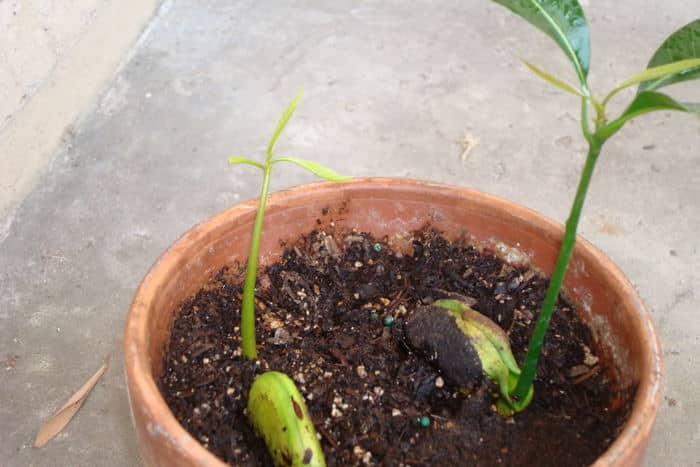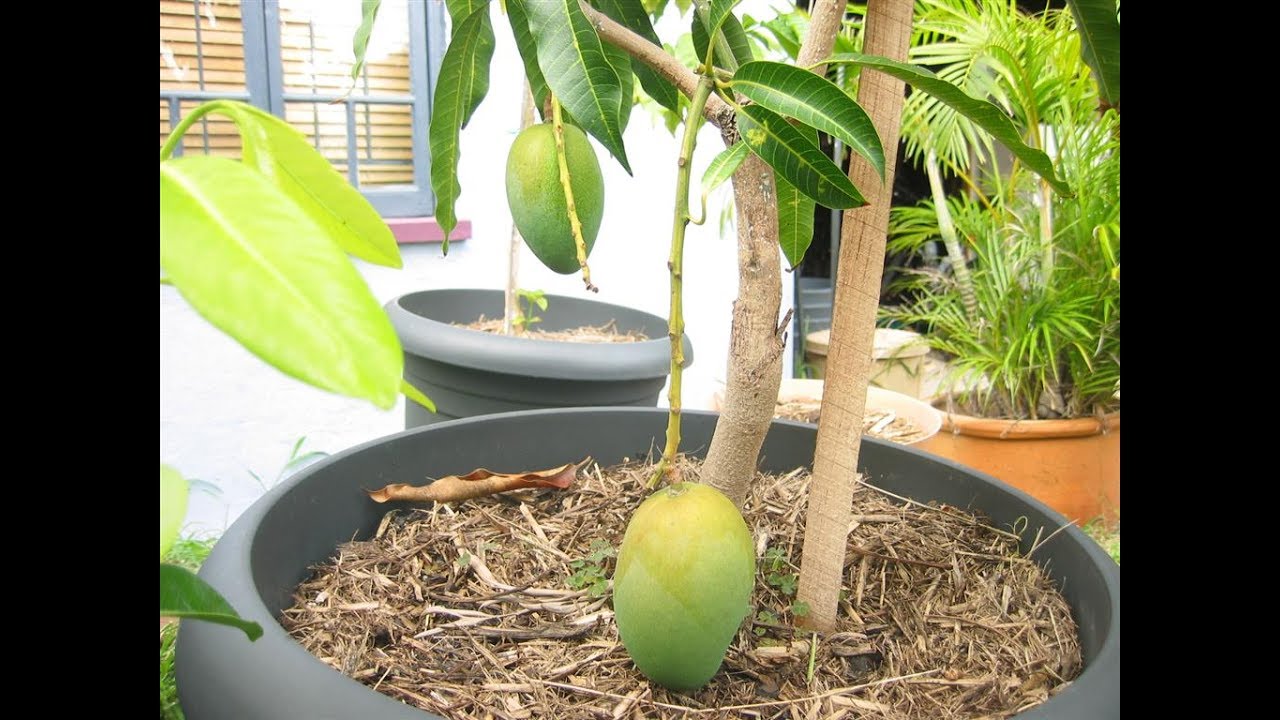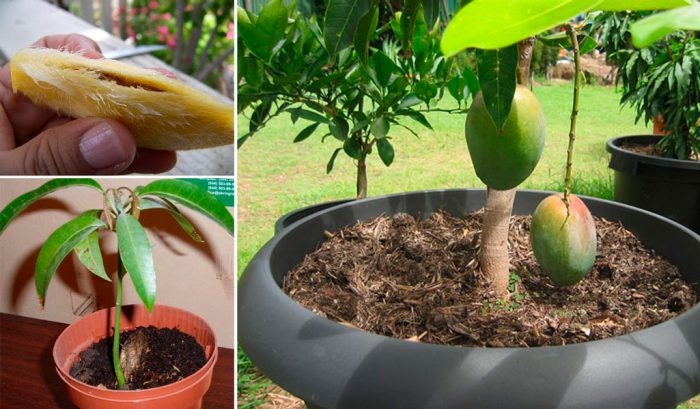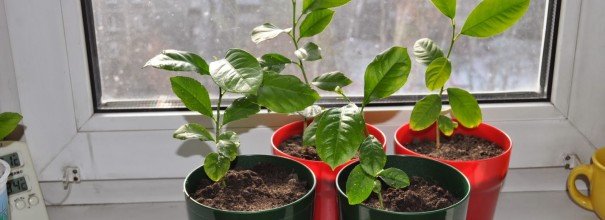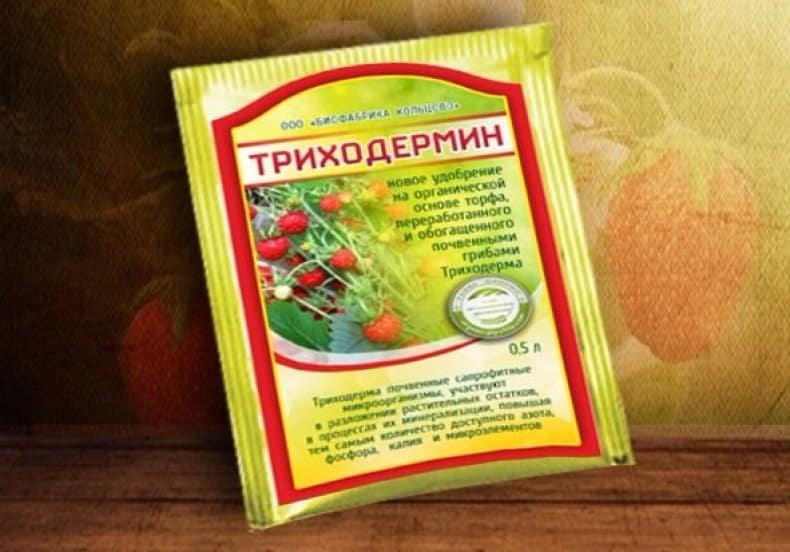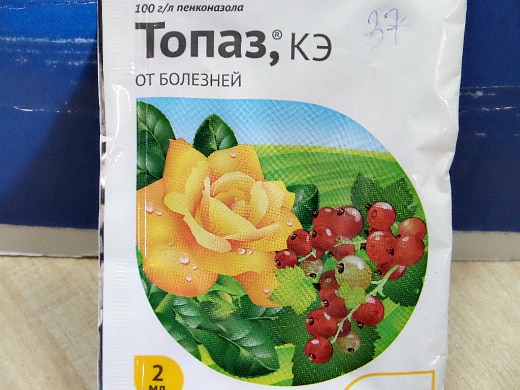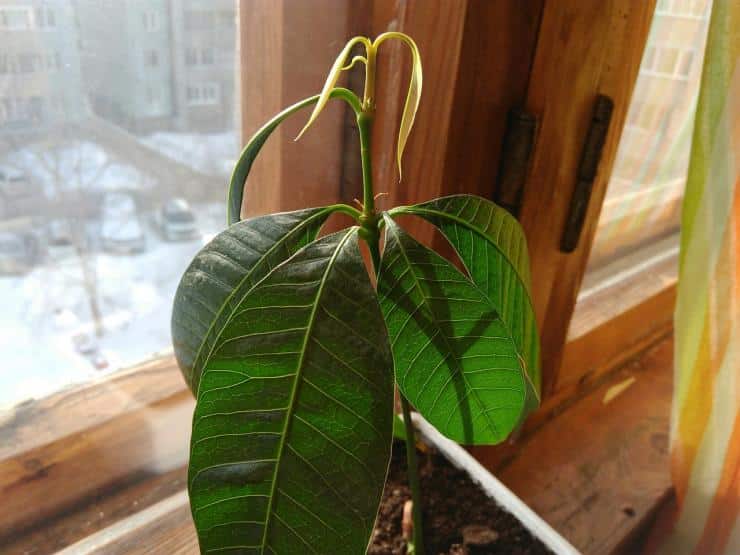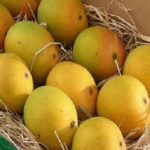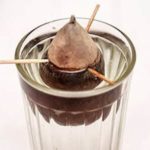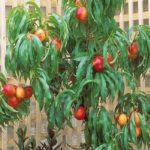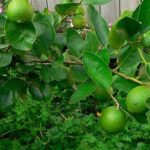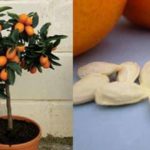An evergreen plant from the tropics is mango. Its fruits have many beneficial qualities. The remaining bone should not be thrown away. After all, a beautiful tree can grow from it, which over time will delight you with delicious fruits. The plant grows very quickly, so you will have to take care of a suitable place for the plant. Before planting, it is recommended to figure out how to properly grow mangoes from seeds.
- Biological description of the species
- Recommended varieties
- For growing at home
- For growing in open ground
- Seed planting technology
- Preparing the pit
- Germination
- Planting mangoes in the ground
- What does a sprout need?
- Correct location and lighting
- Fertile soil
- Humidity and watering
- Optimal temperature conditions
- Top dressing
- Further tree care at home
- Pruning and crown formation
- Mango transplant
- Reproduction
- How to care for a plant in open soil
- How to get mango fruits in a greenhouse and in apartment conditions
- Diseases and pests - ways to combat them
- Anthracnose
- Bacteriosis
- Powdery mildew
- Spider mite
- Shchitovka
- Aphid
- Thrips
Biological description of the species
Description of culture:
- An evergreen plant up to 45 meters high.
- The leaves are large. Length - half a meter, width - 10 centimeters.
- Young foliage is reddish in color, while mature foliage is dark green.
- The flowers are collected in long panicles, yellow in color.
- One panicle contains several thousand flowers.
- Depending on the variety, the fruits can be sour or sweet.
The plant and fruit have the same name - mango.
Recommended varieties
There are many varieties of mangoes in the market, but only some can grow in a particular area. When growing a plant from seeds, it takes 8 years for the first fruits to appear. But without vaccination it may take longer.
Grafted plants bear fruit from the 3rd year and are almost guaranteed to produce a good harvest.
For growing at home
To grow a plant from a seed, you need to purchase a ripe fruit. Any variety is suitable for growing at home.
For growing in open ground
The plant has good cold resistance, so it is suitable for growing in the southern regions of the Russian Federation. The fruits in this climate ripen in early August.
The best varieties are:
- Beverly. The new variety is renowned for having the best taste of all mangoes. The harvest is harvested gradually, starting in July and ending in September.
- Carrie. The plant is medium in size with a dense crown.The advantage of the variety is its aroma. The fruits have absolutely no fiber. The fruit is delicate, so it must be collected as soon as it reaches technical maturity. When dropped they become very wrinkled. Harvest in July.
- Edward. The plant is a fast-growing one. It bears fruit for a long time. The fruits are hard but tasty.
- Cogshall. Suitable for growing in a small garden, as the variety is half dwarf. The peculiarity of the plant is its slow growth. The fruits are sweet and tender. Fruits in July.
- Glenn. A decorative tree with soft-tasting fruits. The harvest is produced annually, for a long time and abundantly.
- Julie. The plant is dwarf in appearance. The pulp is tender and creamy. Fruits in August.
- Kate. The best of the late bloomers. The fruits are large, sweet and tender. The harvest is harvested in July-October.
- Kent. Refers to fast growing. The plant is small in size. The pulp is juicy, practically without fibers. Fruits in July-August.
To speed up fruiting, it is recommended to graft a young plant.
Seed planting technology
Without much effort, you can grow a strong, healthy tree from a seed. At home, it will not acquire large sizes, and fruits will appear less often than those growing in nature.
Preparing the pit
First you need to figure out what to do:
- Choose the right fruit. It must be fully ripe. Best when overripe. It is recommended to purchase in spring or summer. In winter, there is a high probability of purchasing a frozen product.
- Separate the bone. An overripe fruit will have a cracked edge near the pit. It is necessary to open it and remove the inner part. If the pit is closed, cut from the edge and repeat the process described.
Germination
Recommendations:
- It is necessary to germinate in water.To do this, pour soft water into a glass and completely place the bone. The fluid is changed every 2 days. You must not forget about this, otherwise the water will turn sour and the seed will not germinate or will grow sick.
- After 1.5 weeks a small root will appear. Soak the seed in water for the same amount of time until the sprout becomes suitable for planting.
Planting mangoes in the ground
It is necessary to plant a well-sprouted seed in the soil; if planted ahead of time, the sprout will not take root:
- The container will need to be deep. The root system needs a lot of space to grow and develop.
- The substrate chosen is universal. It is sold in any specialty store.
- Drainage is poured to the bottom, then soil. A hole is made in the center, into which a bone is placed and covered with earth.
- The pit is placed root down. Completely fall asleep, water and place in a warm place. The place must be lit.
What does a sprout need?
In order for the sprout to take root and not die, you will need to closely monitor it and follow simple recommendations.
Correct location and lighting
The ideal place is a windowsill on the south side. Can be grown on a warm balcony with maximum sunlight. The culture is thermophilic and requires a lot of sun. In winter, additional lighting must be provided.
Fertile soil
The soil should be well-drained and suitable for indoor plants. In heavy soil and stagnant water, the sprout will quickly die.
Humidity and watering
The young plant prefers regular watering. But water should not stagnate in the ground. The earthen clod must not be allowed to dry out. Under this condition, the tender sprout will die instantly. As soon as the first leaves appear, the crop is sprinkled with warm water.
Optimal temperature conditions
The plant loves warmth.Favorable temperature +22…+25 °C.
Top dressing
When growing at home, it is important to know how to fertilize the plant. Feed with humus. Apply fertilizer twice a year under the trunk of the plant. This will saturate the culture with the necessary elements for growth.
Further tree care at home
When the sprout has taken root well, it is important to properly transplant it into a prepared container and regularly provide the necessary care.
Pruning and crown formation
The plant tolerates pruning well and instantly restores its crown volume. When the tree reaches 1.5 meters at home, the crown begins to form regularly. To do this, cut off excess branches to maintain dwarf size.
Mango transplant
When replanting, it is necessary to monitor the earthen ball with the root system. It cannot be damaged. The capacity is chosen twice as large as the previous one. If transplanted frequently, the mango may die.
Reproduction
It is best to grow the plant from seed. Also propagated by cuttings. But this method is ineffective, since the survival rate is very small.
How to care for a plant in open soil
In the southern regions, mangoes grow well if certain conditions are met:
- The plant is watered only in the evening, while maintaining the required humidity.
- For the winter period, the tree trunk circle must be insulated.
- Feed regularly.
- Loosen the soil in a timely manner.
- It is recommended to mulch the soil around the tree. This will reduce the number of weedings.
- They are treated against diseases and pests.
If you do not trim the crown, the tree will quickly turn into a giant. If you follow all the recommendations, the plant will grow healthy and strong.
How to get mango fruits in a greenhouse and in apartment conditions
Before planting a seed, everyone is interested in whether it is possible to get fruits from the grown tree. From the age of five, the crop blooms regularly every year. But fruiting in a greenhouse and in an apartment causes some problems. The probability that at least one fruit will appear from a grown seed is very small.
The crop is guaranteed to bear fruit if the plant is grafted from a flowering and necessarily previously fruiting mango. Preferably from a nursery. This procedure is not so complicated, since almost all cities have botanical gardens in which mangoes bear fruit.
In two years the tree will bear its first fruits. Until they appear, the crop is fed monthly. Fertilizers use nitrogen-containing fertilizers.
Diseases and pests - ways to combat them
Like all fruit crops, the mango tree is susceptible to various diseases. The plant is also attacked by pests.
Anthracnose
The fungus affects only the above-ground part of the crop. A distinctive feature is its rapid spread, which occurs with the help of wind, insects, dew and rain.
Most often, trees that have wounds or damage become sick. Because it is through them that the infection penetrates.
Signs:
- Whitish spots appear on the leaf blades. Sometimes they are brown.
- The spots are framed by a dark rim. They gradually grow in different directions and after a while merge.
- With high humidity, the disease manifests itself in the form of cracks in the stems, which soon rot. As a result, the plant dies completely.
- In dry climates, the lesion destroys the mango much faster. Diseased stems break in low winds.
Affected branches and leaves are immediately removed and burned.Cumulus DF will help cope with the disease.
Bacteriosis
Characterized by darkening of the edges of the foliage. The surface becomes wrinkled. As a result, the leaf turns black, but still adheres to the branches.
Prevention and control:
- before planting, the seed is kept in Agata-25K solution for a quarter of an hour;
- the affected parts are cut off, and 5 centimeters of healthy-looking tissue are also removed;
- the cut is coated with copper sulfate;
- Trichodermin granules are added to the soil.
Powdery mildew
A gray-white coating on the leaves that resembles flour is a sign of powdery mildew. Over time, it becomes darker and a cloudy liquid begins to ooze from the tissue. Foliage is usually affected, but the disease can also spread to fruits. As a result, they will crack and rot.
Prevention:
- spray the tree with fungicides twice a month; diluted wood ash is also suitable;
- for treatment they are treated with Topaz.
Spider mite
The insect weaves thin threads around the tops of the shoots, on which beige dots appear over time. Over time, the affected areas lose color and dry out. Daily spraying with clean water will help save the plant. This method works when pests first appear, when they have not yet had time to reproduce. The acaricide "Neoron" is used for treatment. You will have to process it three times a month.
Shchitovka
Shoots and foliage are covered with oval growths of a brown hue. Insects are smeared with kerosene and removed by hand. For prevention, it is recommended to wipe the plant every week with a cloth soaked in vodka and spray it with garlic infusion.
Aphid
Green-yellow insects settle on the tops of young leaves, shoots and buds. The pest drinks the sap of the plant.As a result, the affected areas become yellow, dry out and fall off. With small numbers of aphids, pests can be controlled manually. Just press them with your fingers. In case of mass attack, they are fought with the help of general insecticides.
Thrips
A pattern in the form of silvery strokes appears on the leaves. Small black sticks are visible on the surface - these are pests, which the drug "Tanrek" will help get rid of. If you follow all the recommendations, you will be able to grow a strong tree yourself and soon get a harvest.

